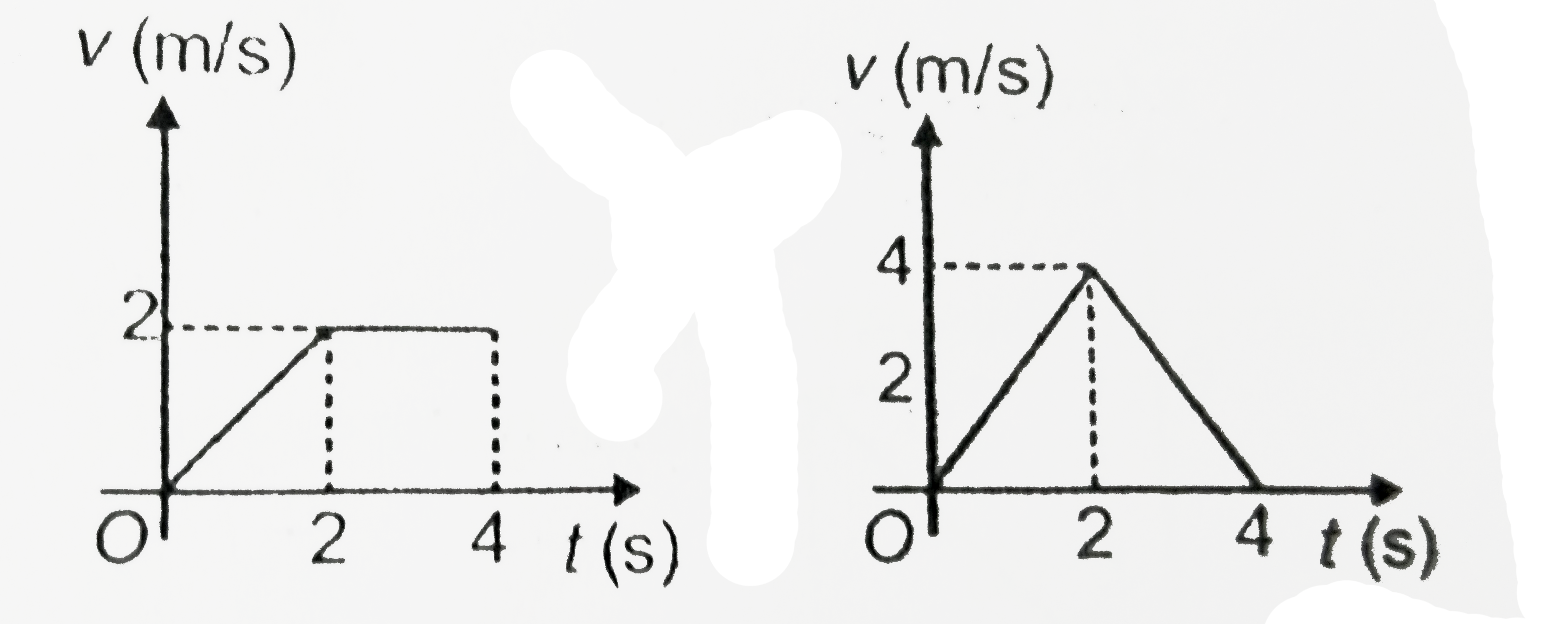The position time graph for two particles- 1 and 2- performing SHM along X axis has been shown in the fig.
(a) Write the velocity of the two particles as a function of time.
(b) If the energy of SHM for the two particles is same write the ratio of their masses.
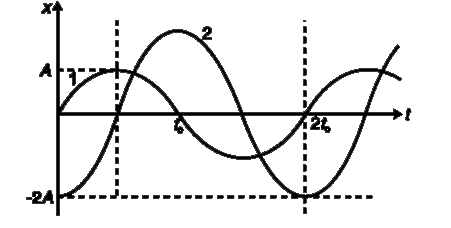
The correct Answer is:v1=Aπt0cos(πt0t) and v2=2Aπt0sin(πt0t)
2:1
Step by step video, text & image solution for The position time graph for two particles- 1 and 2- performing SHM along X axis has been shown in the fig. (a) Write the velocity of the two particles as a function of time. (b) If the energy of SHM for the two particles is same write the ratio of their masses. by Physics experts to help you in doubts & scoring excellent marks in Class 11 exams.
Topper's Solved these Questions
- BOOK - ARIHANTCHAPTER - SIMPLE HARMONIC MOTIONEXERCISE - Level 233videos
SIMPLE HARMONIC MOTION
- BOOK - ARIHANTCHAPTER - SIMPLE HARMONIC MOTIONEXERCISE - Level 39videos
SIMPLE HARMONIC MOTION
- BOOK - ARIHANTCHAPTER - ROTATIONAL MOTIONEXERCISE - PHYSICS159videos
ROTATIONAL MOTION
- BOOK - ARIHANTCHAPTER - SURFACE TENSIONEXERCISE - Surface tension33videos
SURFACE TENSION
Similar Questions
Knowledge Check
- Question 1 - Select One or More
Two particles are performing SHM in same phase. It means that
Athe two partcles must have same distance from the mean posotion simultaneouslyBtwo particle may have same distance from the mean position simultaneouslyCthe two particles must have maximum speed simultaneouslyDthe two particles may have maximum speed simultaneously - Question 2 - Select One or More
The velocity versus time of two particles moving along x-axis varies as shown in the following two plots. Then
 Amaximum separation between the two particles is 2mBmaximum separation between the two particles is 2.5 mCmaximum separation between occurs after time · t=2secDmaximum separation between occurs after time t=3sec
Amaximum separation between the two particles is 2mBmaximum separation between the two particles is 2.5 mCmaximum separation between occurs after time · t=2secDmaximum separation between occurs after time t=3sec - Question 3 - Select One or More
Velocity time graphs of particles A and B moving along x-axis are shown here. Both A and B start from origin:
 AMaximum separation between the particles is 8mBMaximum separation between the particles is 10mCMaximum separation between the particles occurs at t=6sDMaximum separation between the particles occurs at t=8s
AMaximum separation between the particles is 8mBMaximum separation between the particles is 10mCMaximum separation between the particles occurs at t=6sDMaximum separation between the particles occurs at t=8s
displacement versus time curve for a particle executing SHM is is as shown in figure.
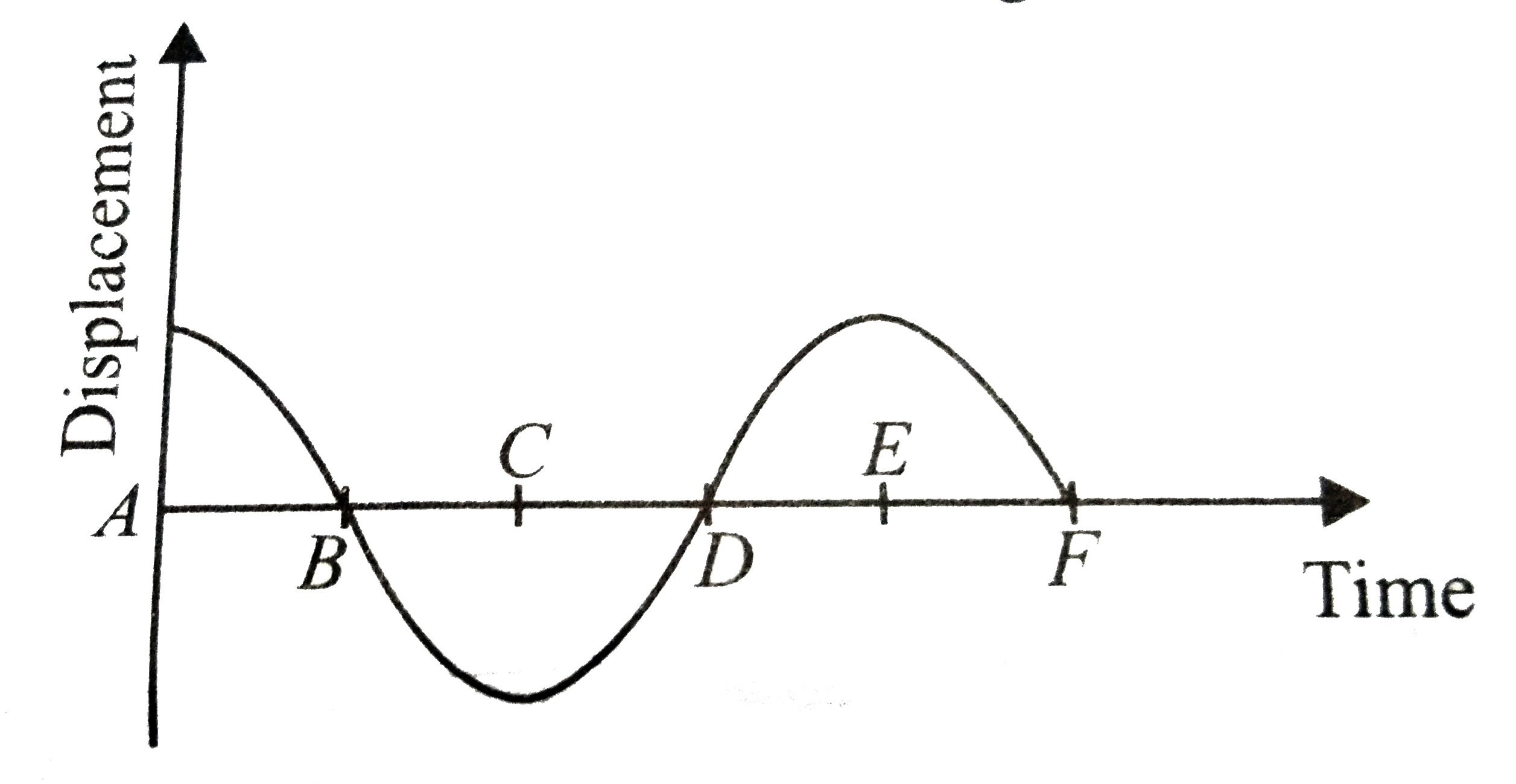
At what points the velocity of the particle is zero?View SolutionThe position time graph for a particle moving along X axis has been shown in the fig. At which of the indicated points the particle has
(i) negative velocity but acceleration in positive X direction.
(ii) positive velocity but acceleration in negative X direction.
(iii) received a sharp blow (a large force for negligible interval of time)?
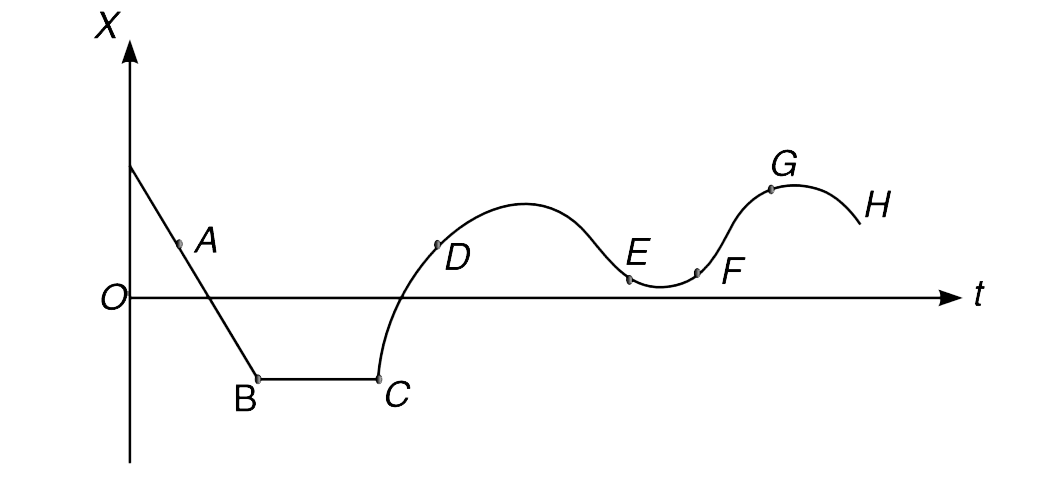 View Solution
View SolutionThe displacement-time graph for two particles is as shown. Find the ratio of their velocities.
View SolutionThe displacement - time graph of a particle executing SHM is as shown in the figure. The maximum velocity of the particle is
 View Solution
View SolutionThe acceleration - time graph for a particle moving along x - axis is shown in figure, If the initial velocity of particle is −5m/s, the velocity at t = 8 s is
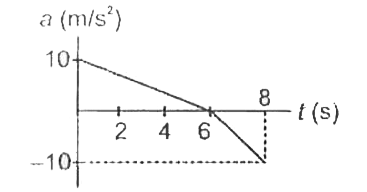 View Solution
View Solution



